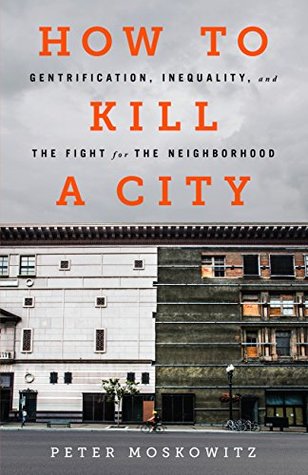More on this book
Community
Kindle Notes & Highlights
Started reading
January 12, 2023
If the city is barely functioning under hypergentrification, degentrification would spell disaster for New York’s budget. And so the city, and every city, really, has a vested interest in keeping itself gentrified. This is even more true for poorer cities such as New Orleans and Detroit, where gentrification and tourism are some of the only economic engines keeping the cities from bankruptcy. Our cities’ economies are sick.
Research by Wayne State University grad student Alex B. Hill found that 69.2 percent of the grantees of nonprofits, fellows at various nonprofits committed to revitalization, and those chosen to take part in tech and business incubators were white. Given this echo chamber, maybe it shouldn’t be surprising that the young leaders of this new Detroit are somewhat crass defenders of their cause, seemingly impervious to criticism that their newly revitalized city is also an exclusionary one. The new Detroit is unable to account for the fact that while the tide of particular sections of Detroit does
...more
“I guess I chose to live here because I’m young and dumb,” Phil told me from the second-floor offices of Ponyride, the co-working and artist studio space he started in Corktown. Ponyride has received funding from the city and various nonprofits, and attention from Martha Stewart and American Express. “I wanted to feel like I was doing something. And Detroit felt like a place where I could have a voice. Detroit is a democratic city.… We never wanted Detroit to be an island.” But the new Detroit is in many ways being built as if it were an island, or perhaps more accurately a city-state within
...more
Anti-gentrification activists are quick to point out that more and better transit options aren’t in and of themselves bad for a city sorely lacking them. Transportation advocates have for years been trying to get Detroit to take public transit seriously. But when you consider that Detroit is 142 square miles—bigger than Boston, San Francisco, and Manhattan combined—and that all its new transit is located within the 7.2 square miles that make up the city’s gentrifying core, the question must be asked: who exactly is this transportation for?
“I do agree that a broken public system does not help challenged neighborhoods, and that needs to be fixed,” Mosey told me. “It’s not right. And it shouldn’t be like that. But that’s not my fault. I’m doing my job. I’m paid to do my job, and my organization does it, and we do it well.” Hardly anyone is saying there’s anything wrong with new restaurants and new stores, new buildings and better security. Most Detroit residents I interviewed were not begrudging toward the newly arrived white hipsters from the suburbs and the coasts. After all, those who came had reasonable reasons: cheap housing,
...more
This highlight has been truncated due to consecutive passage length restrictions.
To Mongo, the term pollinator describes what gentrification has become in Detroit: the white kids move into a neighborhood, and investment and attention follow. Mongo said all the kids from Quicken, Rock Ventures, and the rest of the companies moving downtown are great for D’Mongo’s Speakeasy, but he can’t help but think it’s troubling that the city seems on its way back up only now that they’ve arrived. “The city doesn’t really see black life as life,” he told me. “When the pollinators come, that’s when the civilization comes.… It makes me angry, but you know something? That’s the way it is.”
Quicken), Quicken Loans, DTE Energy (Detroit’s main energy company), and a few other companies can get $20,000 of forgivable loans to purchase a home or apartment within the downtown area, or $3,500 in rental subsidies. Midtown Detroit Inc. has a similar program that has raised $10 million from employers in the area to incentivize 2,000 people to live in Midtown, according to Sue Mosey. Occupancy in Midtown is now at 98 percent. The people who are benefiting from all these subsidies—the gentrifiers of the 7.2—do not seem to realize the work that has gone into bringing and keeping them there.
...more
Detroit was made cheap and therefore attractive to gentrify because, beginning in the 1930s, its black residents were systematically denied jobs in the booming auto industry and, later, mortgages in the suburbs as the housing industry took off. Detroit’s black residents were hired last and fired first when the auto industry collapsed; they were foreclosed upon and denied basic city services. The racism of Detroit’s geography means that the city’s population decline has been incredibly uneven: between 2000 and 2010, the white population of the city decreased by 35 percent, while the black
...more
“The house has been in my family for forty years. Why can’t they buy a vacant home instead of putting someone out on the street?” There’s a perverse answer to Bryant’s question, an activist from Detroit Eviction Defense explained to me one day: Detroit may have tens of thousands of vacant homes, but the ones that have been lived in have usually been maintained lovingly by the people living in them. The roof repairs, flooring, lighting, and yard upkeep have already been paid for by the existing tenants. Kicking people out is a better investment. And there’s no way to know exactly to whom
...more


